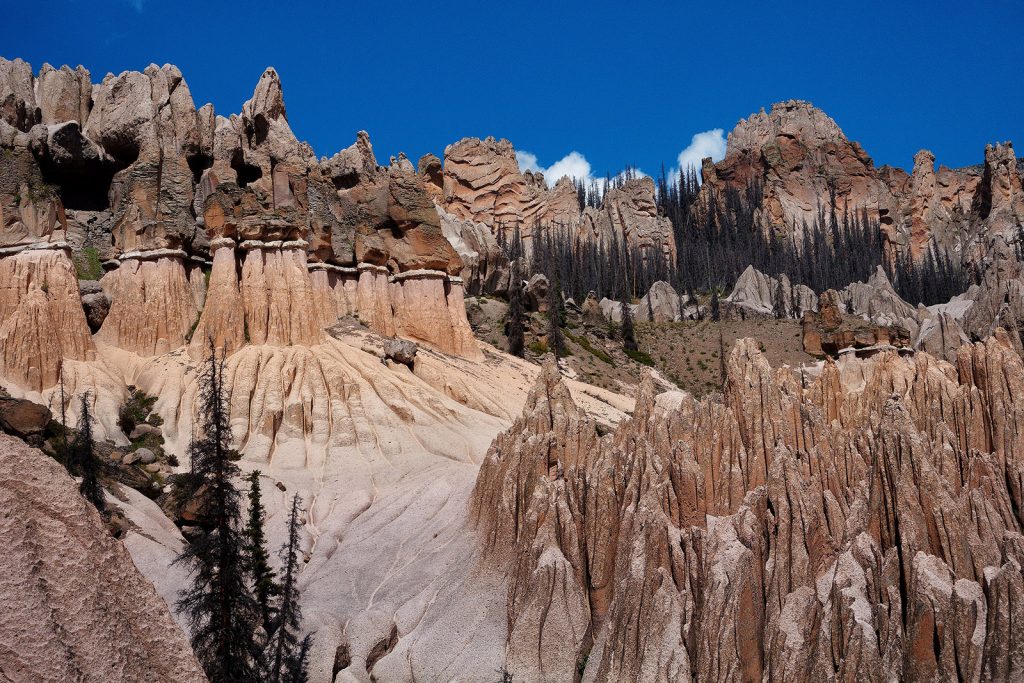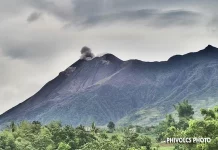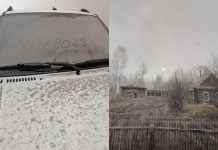The La Garita caldera in Colorado’s San Juan Mountains is an astonishing 22 miles wide and 62 miles long.
The giant scar was formed by the most explosive volcanic eruption on the planet to date.

Colorado is well-known for its tarantula migration, mattress migration and its genocide pit. But likely not for its catastrophic volcanic eruptions – the state only counts one active volcano today. However, a landscape of spectacular rock formations around Colorado hint at the region’s turbulent volcanic past.
Yet, the Centennial State’s most notable geological achievements is the world’s largest known volcanic eruption, which happened about 28 million years ago in the San Juan Mountains.
La Garita Caldera in Colorado
The depression left behind, known as La Garita Caldera, is about 22 miles wide and 62 miles long, scarring the topography of the Gunnison and Rio Grande National Forests.
The eruption that caused La Garita to form discharged more than 1,200 cubic miles of material.
La Garita’s eruption was so so large that it exceeded the highest rating on the Volcano Explosivity Index (VEI) and prompted volcanologists to think about expanding the VEI scale to its estimated 9.2.
To put it in perspective, the infamous 1980 eruption of Washington’s Mount St. Helens, which ejected about 0.25 cubic miles of material, barely rated a five on the VEI. The La Garita volcano eruption was around 5,000 times bigger than that.
With time, the deposited ash layers have been sculpted by ice, water, and wind into a fairyland of pinnacles and spires like those found in the Wheeler Geologic Area.
Silicon-Rich Volcano
Silicon-rich volcanoes, like the one that created the La Garita caldera, behaves like yogurt. It doesn’t come out easily. So you build up a lot of pressure in the volcano until you reach the point where the built-up gases can’t be held anymore.
The breaking point brings a catastrophic eruption, resulting in the collapse of the volcanic structure and the evacuation of the underlying magma chamber.
Crater Lake Caldera in southern Oregon is an 8 km diameter caldera containing a lake. The caldera formed about 6800 years ago as a result of the eruption of about 75 km3 of rhyolite magma in the form of tephra, found as far away as Canada, accompanied by pyroclastic flows that left thick deposits of tuff on the flanks of the volcano. Subsequent eruptions have built a cinder cone on the floor of the caldera, which now forms an island called Wizard Island.
Very large calderas in the western United States include Yellowstone Caldera in Wyoming, Long Valley Caldera in eastern California, and Valles Caldera in New Mexico.
Felsic lava is what caused Mount Vesuvius to destroy Pompeii in 79 C.E. and Mount St. Helens to be the most destructive volcano in U.S. history. More volcanic news on Strange Sounds or Steve Quayle. [5280, USDA]













IT amazes me how they have no trouble finding whores who will lie to everyone and anything the GOVERNMENT won’t tell the truth about,WHEN they don’t mention the LAST POLESHIFT,you know right then their LIARS,and have NO intention of telling the truth about anything…A bunch of BOGAS ART WORK IS NOT HISTORY…but everyone will find that out here shortly..the hard way…